Gareth Jones was born in Lancashire and while he played a number of instruments as a youngster, his interest soon turned to music technology with the purchase of a tape recorder.
He gained his formal training at the BBC and began working as an engineer in various recording spaces including Pathway, a small 8 track studio in North London which was frequently used by Stiff Records and where THE DAMNED recorded ‘New Rose’ in 1976. It was there that he worked on MADNESS’ debut single ‘The Prince’ in 1979. But it was his work with former ULTRAVOX front man John Foxx and his 1980 long playing debut ‘Metamatic’ that was to be his breakthrough.
This led to work producing esoteric acts such as TUXEDOMOON and TAUCHEN-PROKOPETZ; it was while working with the latter on the 1983 ‘DÖF’ record in Vienna that it was suggested that Jones mix the album at Hansa Tonstudio in West Berlin. At the time, it was the most high-tech complex he had ever worked in and prompted to his relocation to die Mauerstadt.
Many British bands began recording and mixing in Berlin as the exchange rate made things highly cost effective. It was while Jones was engineering the recording of the third DEPECHE MODE album ‘Construction Time Again’ at John Foxx’s own studio The Garden in Shoreditch that he proposed mixing the record in Berlin. He had been initially reluctant to work with DEPECHE MODE who he considered lightweight but was eventually persuaded by Foxx to become their Tonmeister.
Gareth Jones was a pioneer in the use of state of art digital equipment including the NED Synclavier and AMS digital delays; among his techniques was using the big ballroom at Hansa to capture atmospheres created by sounds being played through large amplifiers which were then recorded with microphones, creating a huge cavernous sound.
Although chiefly known for his work with synths and sampling, Jones also worked with more guitar driven bands such as WIRE, THE HOUSE OF LOVE, INSPIRAL CARPETS and MOGWAI as well as dark lord Nick Cave. After the fall of The Iron Curtain, Jones later returned to London where he remains today at his current base theArtLab within The Strongroom complex in London.
Having fought cancer in 2008, he continues to produce, mix and compose with a third SUNROOF album with Daniel Miller currently in progress. Meanwhile Jones had also provided his expertise and guidance to emerging studio personnel via the Red Bull Academy.
With a restriction of one track per album project and in chronological order, here are 20 tracks which form ELECTRICITYCLUB.CO.UK’s Beginner’s Guide to the innovative career of Gareth Jones.
JOHN FOXX Plaza (1980)
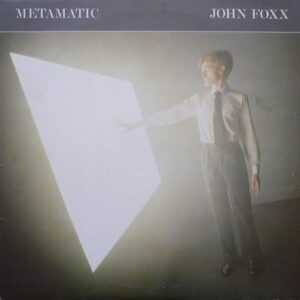 Having departed ULTRAVOX, when John Foxx recorded his debut solo record, Gareth Jones was the engineer at Pathway, a studio known for its reggae sessions. While the aim was a starker vision of electronic music, both Foxx and Jones absorbed dub influences where things would be stripped back but one sound given all the power. As well as the surprise hit single ‘Underpass’, this aesthetic suited the dystopian ‘Metamatic’ opener ‘Plaza’.
Having departed ULTRAVOX, when John Foxx recorded his debut solo record, Gareth Jones was the engineer at Pathway, a studio known for its reggae sessions. While the aim was a starker vision of electronic music, both Foxx and Jones absorbed dub influences where things would be stripped back but one sound given all the power. As well as the surprise hit single ‘Underpass’, this aesthetic suited the dystopian ‘Metamatic’ opener ‘Plaza’.
Available on the JOHN FOXX album ‘Metamatic’ via Metamatic Records
TUXEDOMOON Incubus (1981)
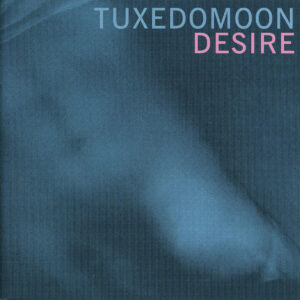 Impressed with the sound of ‘Metamatic’, TUXEDOMOON had originally sought John Foxx to produce their next album ‘Desire’ but unavailable, he put the American art rockers in touch with Gareth Jones. “Gareth was brilliant, fabulous” said the band’s Blaine L Reininger, “He was able to teach us; kind of organise us”. On one of the highlights was ‘Incubus’ which used the same Roland CR-78 Compurhythm used as on ‘Metamatic’.
Impressed with the sound of ‘Metamatic’, TUXEDOMOON had originally sought John Foxx to produce their next album ‘Desire’ but unavailable, he put the American art rockers in touch with Gareth Jones. “Gareth was brilliant, fabulous” said the band’s Blaine L Reininger, “He was able to teach us; kind of organise us”. On one of the highlights was ‘Incubus’ which used the same Roland CR-78 Compurhythm used as on ‘Metamatic’.
Available on the TUXEDOMOON album ‘Desire’ via Crammed Discs
JOHN FOXX Dancing Like A Gun (1981)
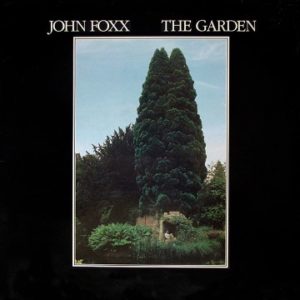 With a second album and studio both named ‘The Garden’, Gareth Jones was again working with John Foxx to realise both. After the colder overtures of ‘Metamatic’, Foxx had thawed out considerably after a holiday in Italy and as a result, traditional instrumentation returned. ‘Dancing Like A Gun’ contradicted its “Oppenheimer waltzing” line but blended synth with art rock to recall ‘Quiet Men’ from his ULTRAVOX days.
With a second album and studio both named ‘The Garden’, Gareth Jones was again working with John Foxx to realise both. After the colder overtures of ‘Metamatic’, Foxx had thawed out considerably after a holiday in Italy and as a result, traditional instrumentation returned. ‘Dancing Like A Gun’ contradicted its “Oppenheimer waltzing” line but blended synth with art rock to recall ‘Quiet Men’ from his ULTRAVOX days.
Available on the JOHN FOXX album ‘The Garden’ via Metamatic Records
https://www.facebook.com/johnfoxxmetamatic
DEPECHE MODE Two Minute Warning (1983)
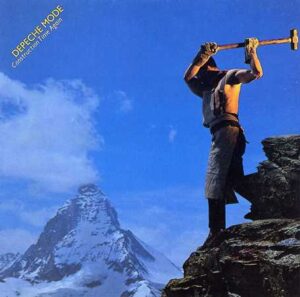 Working alongside Daniel Miller who continued as producer, Gareth Jones had DEPECHE MODE sampling found sounds around the-then derelict surroundings of Shroreditch to create a new sonic template in pop. Songs like ‘Everything Counts’, ‘Pipeline’ and ‘More Than A Party had socio-political themes while the Alan Wilder composed ditty ‘Two Minute Warning’ reflected the heightened Cold War angst of the time.
Working alongside Daniel Miller who continued as producer, Gareth Jones had DEPECHE MODE sampling found sounds around the-then derelict surroundings of Shroreditch to create a new sonic template in pop. Songs like ‘Everything Counts’, ‘Pipeline’ and ‘More Than A Party had socio-political themes while the Alan Wilder composed ditty ‘Two Minute Warning’ reflected the heightened Cold War angst of the time.
Available on the DEPECHE MODE album ‘Construction Time Again’ via Sony Music
FAD GADGET Collapsing New People (1984)
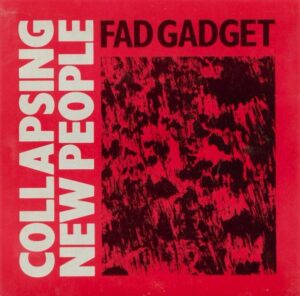 Frank Tovey had been intrigued by the sound of German industrial band EINSTÜRZENDE NEUBAUTEN whose name translated into English as “collapsing new buildings” and their use of industrial equipment and found objects. So while recording at Hansa, he got Gareth Jones to record a large printing press nearby as the basis for a loop rhythm that became ‘Collapsing New People’, one of the best FAD GADGET singles.
Frank Tovey had been intrigued by the sound of German industrial band EINSTÜRZENDE NEUBAUTEN whose name translated into English as “collapsing new buildings” and their use of industrial equipment and found objects. So while recording at Hansa, he got Gareth Jones to record a large printing press nearby as the basis for a loop rhythm that became ‘Collapsing New People’, one of the best FAD GADGET singles.
Available on the FAD GADGET album ‘Gag’ via Mute Records
https://www.instagram.com/fadgadgetofficial/
BLAINE L REININGER Mystery & Confusion (1984)
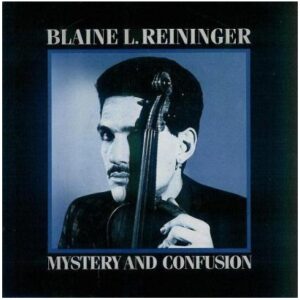 For his first second solo album, Blaine L Reininger was reunited with Gareth Jones at the production helm. Using Roland’s portable pre-MIDI holy trinity of the TB-303 Bassline, the SH-101 monosynth and the TR-808 Rhythm Composer synced via a customised cable, its highlight was the cinematic synthpop of ‘Mystery & Confusion’ which saw the TUXEDOMOON leader exude a distinct Eurocentric spirit.
For his first second solo album, Blaine L Reininger was reunited with Gareth Jones at the production helm. Using Roland’s portable pre-MIDI holy trinity of the TB-303 Bassline, the SH-101 monosynth and the TR-808 Rhythm Composer synced via a customised cable, its highlight was the cinematic synthpop of ‘Mystery & Confusion’ which saw the TUXEDOMOON leader exude a distinct Eurocentric spirit.
Available on the BLAINE L REININGER album ‘Night Air’ via Les Disques du Crépuscule
https://lesdisquesducrepuscule.com/blaine_l_reininger.html
PALAIS SCHAUMBURG Beat Of 2 (1984)
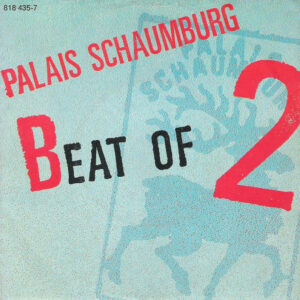 An influential Neue Deutsche Welle band from Hamburg, PALAIS SCHAUMBURG were on the bill with DEPECHE MODE at the 1981 Mute Night at the London Lyceum. Their members included Thomas Fehlmann who went on to join THE ORB as well as produce ERASURE and experimental producer Holger Hiller. The percussive ‘Beat Of 2’ turned out to be their final single and was produced by Gareth Jones alongside Inga Humpe.
An influential Neue Deutsche Welle band from Hamburg, PALAIS SCHAUMBURG were on the bill with DEPECHE MODE at the 1981 Mute Night at the London Lyceum. Their members included Thomas Fehlmann who went on to join THE ORB as well as produce ERASURE and experimental producer Holger Hiller. The percussive ‘Beat Of 2’ turned out to be their final single and was produced by Gareth Jones alongside Inga Humpe.
Available on the PALAIS SCHAUMBURG album ‘Parlez-Vous Schaumburg?’ via Mercury Records
HUMPE HUMPE Yama-ha (1985)
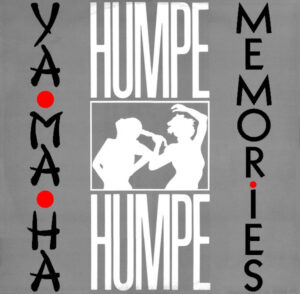 A slice of quirky Neue Deutsche Welle from sisters Annette and Inga Humpe, ‘Yama-ha’ was produced by Roma Baran who had worked on Laurie Anderson’s ‘O Superman’. The “shopping list” synth and sample number listing a number of Japanese tech and vehicle manufacturers was remixed by Gareth Jones. Incidentally the B-side ‘Memories’ was produced by Conny Plank. In the UK, the duo was known as SWIMMING WITH SHARKS.
A slice of quirky Neue Deutsche Welle from sisters Annette and Inga Humpe, ‘Yama-ha’ was produced by Roma Baran who had worked on Laurie Anderson’s ‘O Superman’. The “shopping list” synth and sample number listing a number of Japanese tech and vehicle manufacturers was remixed by Gareth Jones. Incidentally the B-side ‘Memories’ was produced by Conny Plank. In the UK, the duo was known as SWIMMING WITH SHARKS.
Available on the HUMPE HUMPE album ‘The Platinum Collection’ via Warner Music Group Germany
https://www.facebook.com/profile.php?id=100063561587623
EINSTURZEN NEUBAUTEN Yü-Gung (1985)
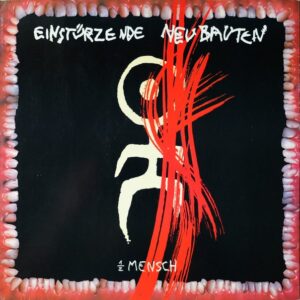 With their early albums characterised by harsh shouting and screaming, when Gareth Jones was brought in to work with EINSTURZEN NEUBAUTEN, it was to provide a sense of order to the West Berlin group’s experimental metal-bashing. Using sampling technology to provide an avant-dance palette to accompany Blixa Bargeld’s fierce chant of “FÜTTER MEIN EGO”, the sinister rhythm was inspired by the sound of chopping up speed!
With their early albums characterised by harsh shouting and screaming, when Gareth Jones was brought in to work with EINSTURZEN NEUBAUTEN, it was to provide a sense of order to the West Berlin group’s experimental metal-bashing. Using sampling technology to provide an avant-dance palette to accompany Blixa Bargeld’s fierce chant of “FÜTTER MEIN EGO”, the sinister rhythm was inspired by the sound of chopping up speed!
Available on the EINSTURZEN NEUBAUTEN album ‘Halber Mensch’ via Potomak
BRONSKI BEAT Hit That Perfect Beat (1985)
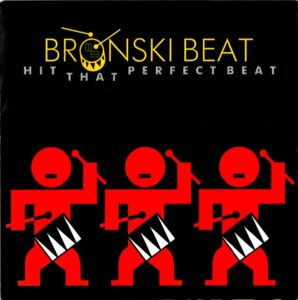 Featuring new BRONSKI BEAT singer John Jøn Foster following the departure of Jimmy Somerville, ‘Hit That Perfect Beat’ was a frantically paced HI-NRG track helmed by Adam Williams of THE SELECTER who had been co-producer on EURYTHMICS’ singles ‘The Walk’ and ‘Love Is A Stranger’. Impressed by his work for DEPECHE MODE, Gareth Jones did the final mix which replicated the pumping presence of ‘Master & Servant’.
Featuring new BRONSKI BEAT singer John Jøn Foster following the departure of Jimmy Somerville, ‘Hit That Perfect Beat’ was a frantically paced HI-NRG track helmed by Adam Williams of THE SELECTER who had been co-producer on EURYTHMICS’ singles ‘The Walk’ and ‘Love Is A Stranger’. Impressed by his work for DEPECHE MODE, Gareth Jones did the final mix which replicated the pumping presence of ‘Master & Servant’.
Available on the BRONSKI BEAT album ‘Truthdare Doubledare’ via London Records
https://www.facebook.com/bronskibeatband
DEPECHE MODE Stripped (1986)
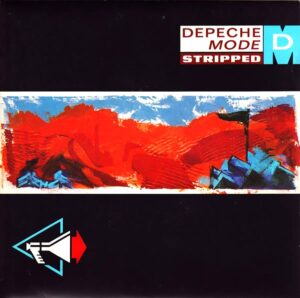 Rising from Tonmeister to co-producer during ‘Some Great Reward’, Jones continued in the role for ‘Black Celebration’. By now, Martin Gore’s songs had got bleaker and Bleaker. Inspired by German film director Werner Herzog, Daniel Miller wanted a dystopian intensity and the album to be lived, a feeling which ramped up when the band finished the album in Berlin. ‘Stripped’ was the “remarkable” single that heralded this darker direction.
Rising from Tonmeister to co-producer during ‘Some Great Reward’, Jones continued in the role for ‘Black Celebration’. By now, Martin Gore’s songs had got bleaker and Bleaker. Inspired by German film director Werner Herzog, Daniel Miller wanted a dystopian intensity and the album to be lived, a feeling which ramped up when the band finished the album in Berlin. ‘Stripped’ was the “remarkable” single that heralded this darker direction.
Available on the DEPECHE MODE album ‘Black Celebration’ via Sony Music
https://www.facebook.com/depechemode
MINISTRY Just Like You (1986)
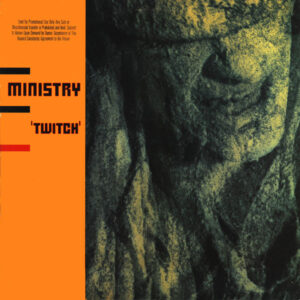 Having debuted with the synth-oriented ‘With Sympathy’ album in 1983, by 1986 MINISTRY had become more abrasive with industrial elements creeping into their sound. Engineered by Gareth Jones but produced by Adrian Sherwood of On-U Sound, the beat driven ‘Just Like You’ featured a Fairlight CMI which mainman Al Jourgensen had been able to acquire as a part of the deal with Sire Records.
Having debuted with the synth-oriented ‘With Sympathy’ album in 1983, by 1986 MINISTRY had become more abrasive with industrial elements creeping into their sound. Engineered by Gareth Jones but produced by Adrian Sherwood of On-U Sound, the beat driven ‘Just Like You’ featured a Fairlight CMI which mainman Al Jourgensen had been able to acquire as a part of the deal with Sire Records.
Available on the MINISTRY album ‘Twitch’ via Rhino Records
NITZER EBB Let Your Body Learn (1987)
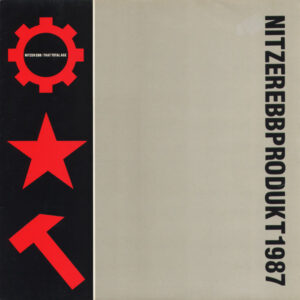 Founded by Bon, Douglas McCarthy and David Gooday, with their musical premise of “muscle and hate”, NITZER EBB took the seed of DAF to develop a danceable industrial finesse. While Phil Harding of PWL fame produced and mixed most of their debut long player released by Mute, Gareth Jones and Daniel Miller teamed up to remix their energetic single ‘Let Your Body Learn’ which had bee originally independently issued in 1986.
Founded by Bon, Douglas McCarthy and David Gooday, with their musical premise of “muscle and hate”, NITZER EBB took the seed of DAF to develop a danceable industrial finesse. While Phil Harding of PWL fame produced and mixed most of their debut long player released by Mute, Gareth Jones and Daniel Miller teamed up to remix their energetic single ‘Let Your Body Learn’ which had bee originally independently issued in 1986.
Available on the NITZER EBB album ‘That Total Age’ via Mute Records
https://www.nitzerebbprodukt.com/
ERASURE Blue Savannah (1989)
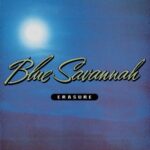 After his DEPECHE MODE Berlin trilogy, Gareth Jones remained in the Mute family and began a long-standing working relationship with ERASURE. The concept of ‘Blue Savannah’ was Roy Orbison doing electronic pop. As co-producer with Mark Saunders, he provided an uncluttered backdrop to showcase the soaring optimism of what was to become one of the most universally loved songs by Andy Bell and Vince Clarke.
After his DEPECHE MODE Berlin trilogy, Gareth Jones remained in the Mute family and began a long-standing working relationship with ERASURE. The concept of ‘Blue Savannah’ was Roy Orbison doing electronic pop. As co-producer with Mark Saunders, he provided an uncluttered backdrop to showcase the soaring optimism of what was to become one of the most universally loved songs by Andy Bell and Vince Clarke.
Available on the ERASURE album ‘Wild!’ via Mute Records
IRMIN SCHMIDT Gormenghast Drift (1991)
 When Mute Records licensed the CAN back catalogue in 1990 via their manager Hildegard Schmidt’s Spoon imprint, there came the opportunity to work on new solo recordings with their keyboard virtuoso Irmin Schmidt. With Gareth Jones as co-producer, while there were vocals and contributions from bandmates Jaki Liebezeit and Michael Karoli, the closing instrumental ‘Gormenghast Drift’ was an atmospheric delight.
When Mute Records licensed the CAN back catalogue in 1990 via their manager Hildegard Schmidt’s Spoon imprint, there came the opportunity to work on new solo recordings with their keyboard virtuoso Irmin Schmidt. With Gareth Jones as co-producer, while there were vocals and contributions from bandmates Jaki Liebezeit and Michael Karoli, the closing instrumental ‘Gormenghast Drift’ was an atmospheric delight.
Available on the IRMIN SCHMIDT album ‘Impossible Holidays’ via Spoon Records
https://mutebank.co.uk/collections/irmin-schmidt
ERASURE Grace (1995)
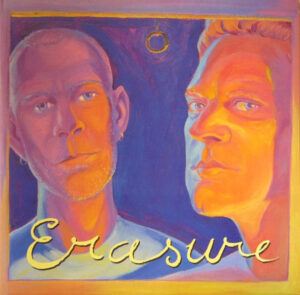 An attempt at prog synth which Andy Bell referred to as ‘Bright Side Of The Sun’, the seventh ERASURE album saw Gareth Jones and Thomas Fehlmann work together as producers on the ambitious if flawed self-titled opus. While there was the brilliant under rated single ‘Fingers and Thumbs (Cold Summer’s Day)’, there were also beautiful emotive neo-classical moments such as ‘Grace’ among the highlights.
An attempt at prog synth which Andy Bell referred to as ‘Bright Side Of The Sun’, the seventh ERASURE album saw Gareth Jones and Thomas Fehlmann work together as producers on the ambitious if flawed self-titled opus. While there was the brilliant under rated single ‘Fingers and Thumbs (Cold Summer’s Day)’, there were also beautiful emotive neo-classical moments such as ‘Grace’ among the highlights.
Available on the ERASURE album ‘Erasure’ via Mute Records
https://www.facebook.com/erasureinfo
BOYTRONIC Living Without You (2002)
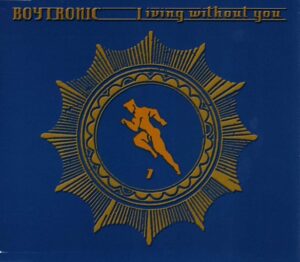 The 21st Century incarnation of BOYTRONIC saw the return of original frontman Holger Wobker. The anthemic ‘Living Without You’, which was one of two songs produced by Gareth Jones for the parent album ‘Autotunes’, utilised an impressive array of instrumentation including electronics, filmic orchestrations and rock guitars as well as Wobker’s impassioned vocals.
The 21st Century incarnation of BOYTRONIC saw the return of original frontman Holger Wobker. The anthemic ‘Living Without You’, which was one of two songs produced by Gareth Jones for the parent album ‘Autotunes’, utilised an impressive array of instrumentation including electronics, filmic orchestrations and rock guitars as well as Wobker’s impassioned vocals.
Available on the BOYTRONIC album ‘Autotunes’ via Strange Ways Records
https://www.facebook.com/BoytronicOriginal/
MESH No Place Like Home (2006)
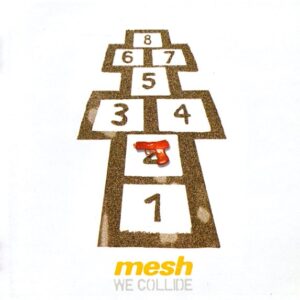 When it suggested that MESH work with Gareth Jones, the band were initially reluctant because of the inevitable DEPECHE MODE comparisons. But Rich Silverthorn remembered “He was a really nice guy. We spent about 10 days locked in eating Chinese food, laughing and mixing ‘We Collide’”. Of the six tracks Jones mixed, ‘No Place Like Home’ proved to be one of the most poignant songs of MESH’s career.
When it suggested that MESH work with Gareth Jones, the band were initially reluctant because of the inevitable DEPECHE MODE comparisons. But Rich Silverthorn remembered “He was a really nice guy. We spent about 10 days locked in eating Chinese food, laughing and mixing ‘We Collide’”. Of the six tracks Jones mixed, ‘No Place Like Home’ proved to be one of the most poignant songs of MESH’s career.
Available on the MESH album ‘We Collide’ via Dependent Records
GARETH JONES Safe Travels (2020)
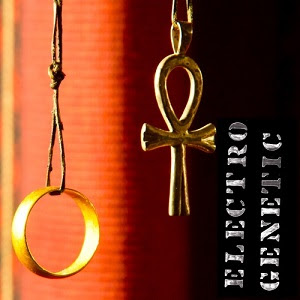 On the milestone of his 65th birthday, Gareth Jones’ released ‘ELECTROGENETIC‘, his first album under his own name. Most of the tracks began as improvisations around a modular patch, then crafted in a blend of humanity and electronics. While in Detroit, he developed the subtle rhythmic pulse and absorbing keyboard overtures of ‘Safe Travels’, one of several poignant tracks commemorating his recently passed mother and mother-in-law.
On the milestone of his 65th birthday, Gareth Jones’ released ‘ELECTROGENETIC‘, his first album under his own name. Most of the tracks began as improvisations around a modular patch, then crafted in a blend of humanity and electronics. While in Detroit, he developed the subtle rhythmic pulse and absorbing keyboard overtures of ‘Safe Travels’, one of several poignant tracks commemorating his recently passed mother and mother-in-law.
Available on the GARETH JONES album ‘ELECTROGENETIC‘ via Calm + Collect
https://www.instagram.com/garethgeniusjones/
SUNROOF 1.8 – 2.3.19 (2021)
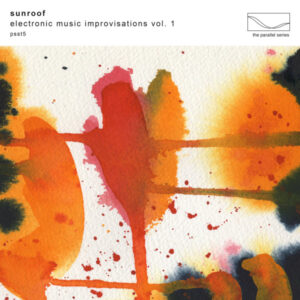 A studio collaboration between Gareth Jones and Daniel Miller, while this project mostly produced covers such as ‘Hero’ for ‘A Homage to NEU!’ in 1998 and assorted remixes, SUNROOF started playing live shows and finally released a debut long player ‘Electronic Music Improvisations Vol1’. It featured a collection of improvised modular experiments recorded in 2019, of which the energetic ‘1.8 – 2.3.19’ was the most immediate.
A studio collaboration between Gareth Jones and Daniel Miller, while this project mostly produced covers such as ‘Hero’ for ‘A Homage to NEU!’ in 1998 and assorted remixes, SUNROOF started playing live shows and finally released a debut long player ‘Electronic Music Improvisations Vol1’. It featured a collection of improvised modular experiments recorded in 2019, of which the energetic ‘1.8 – 2.3.19’ was the most immediate.
Available on the SUNROOF album ‘Electronic Music Improvisations Vol1’ via Mute Artists
https://mute.com/artists/sunroof
Text by Chi Ming Lai
1 April 2024

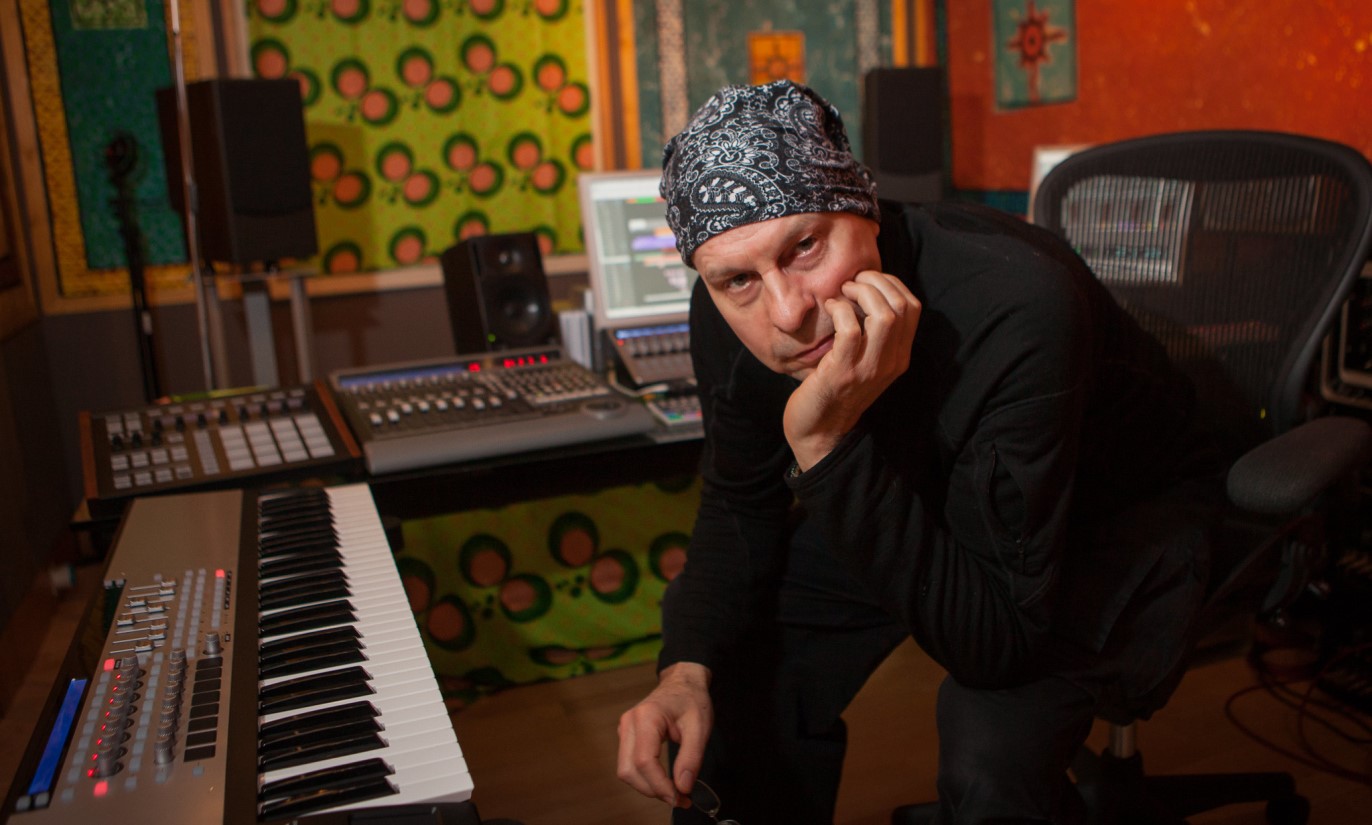
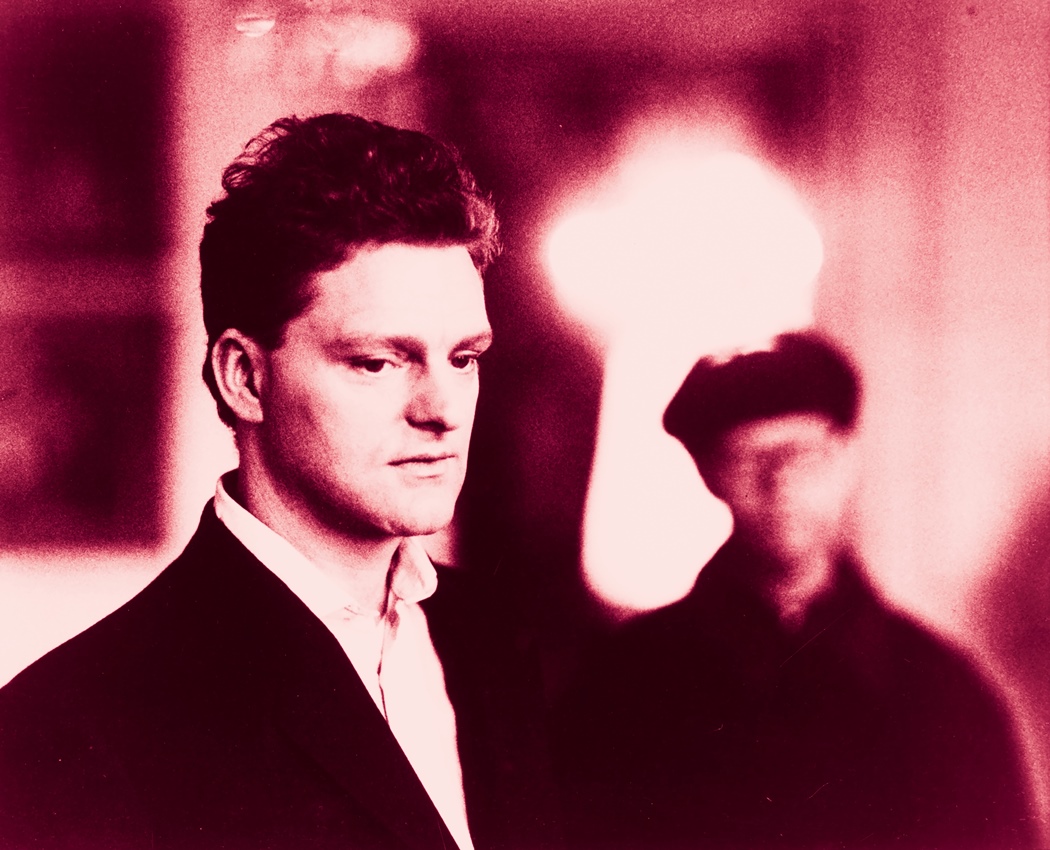
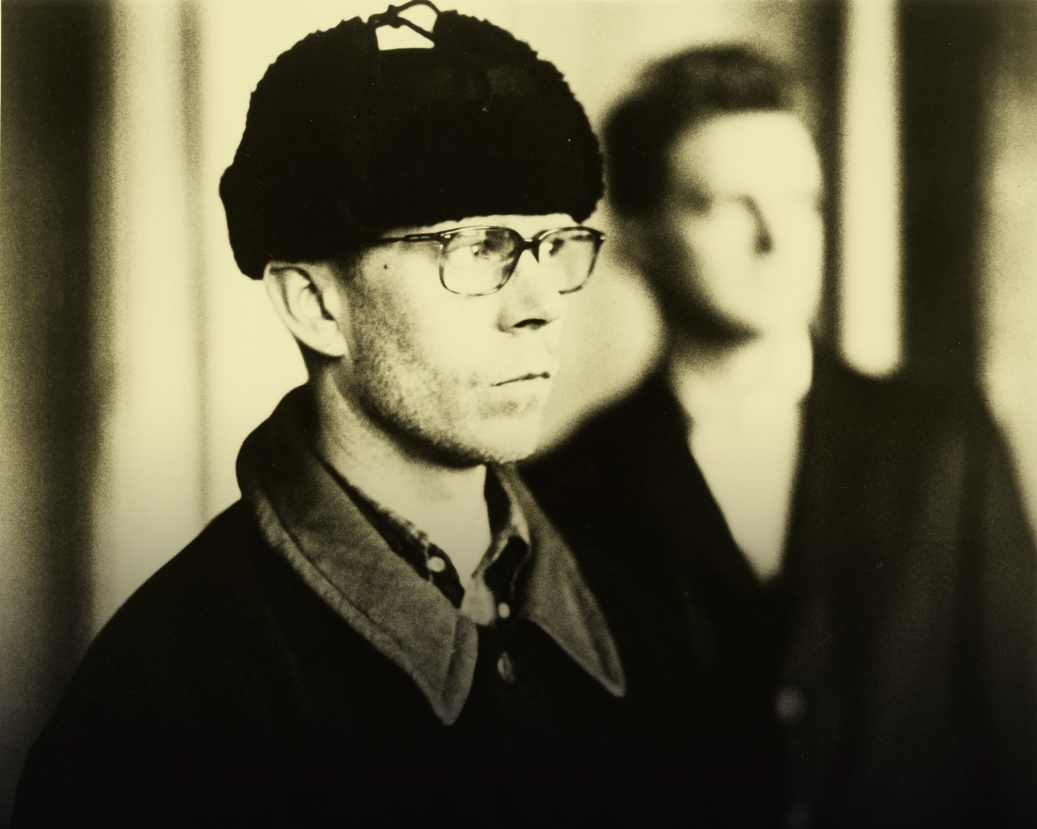
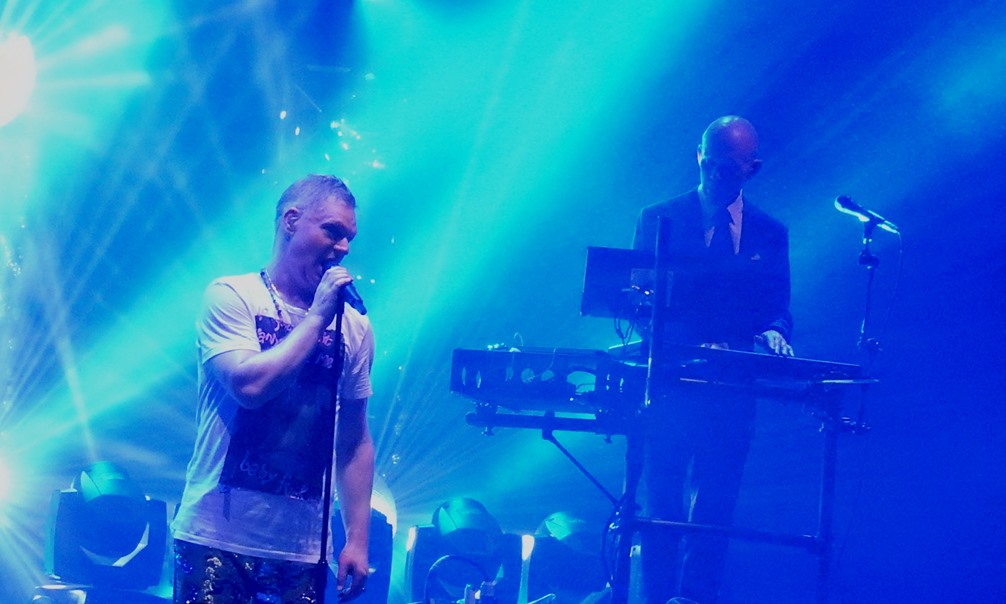
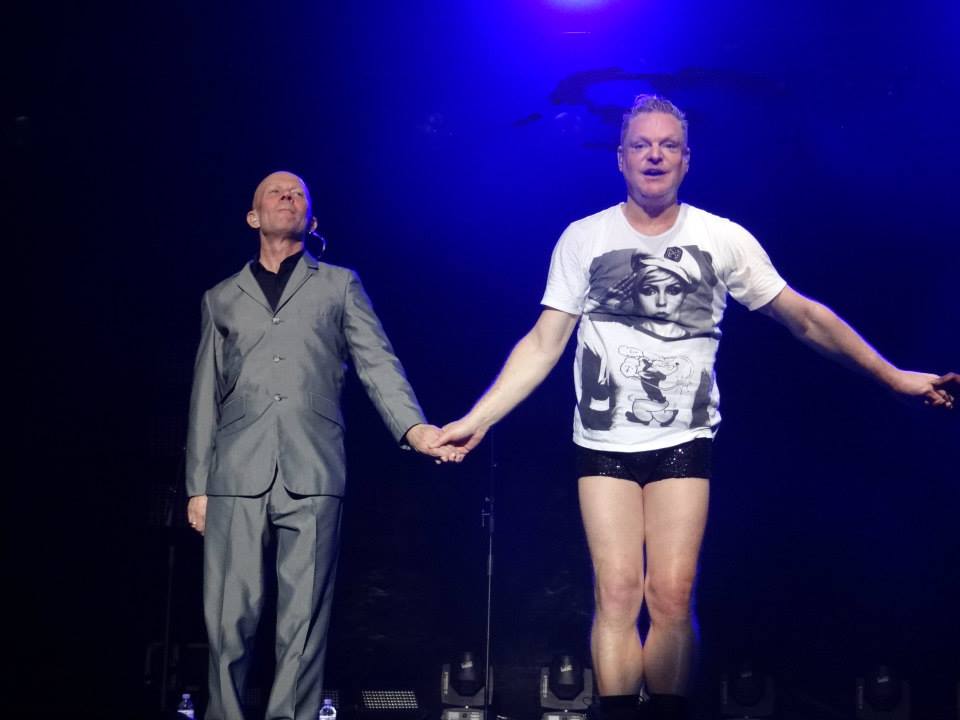
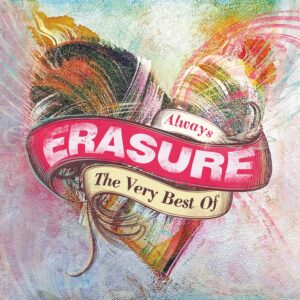
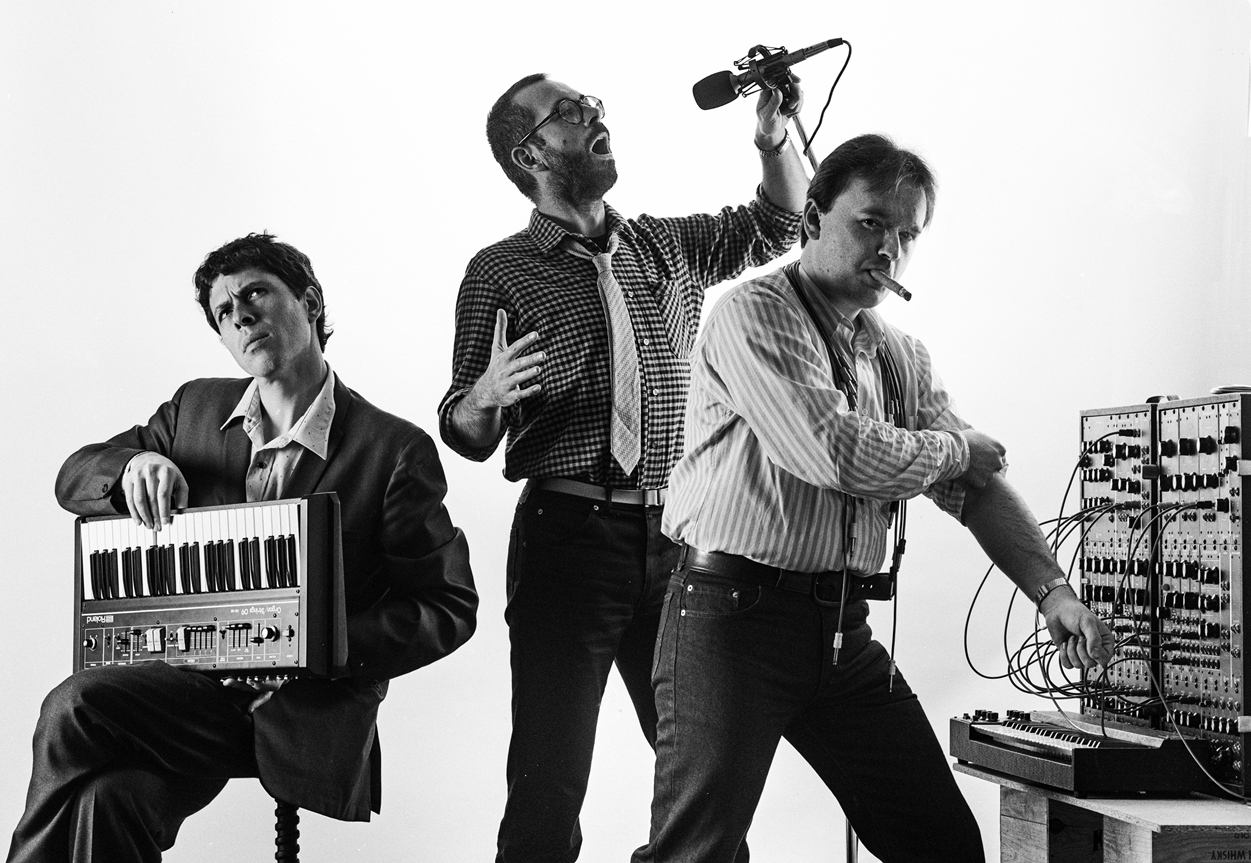
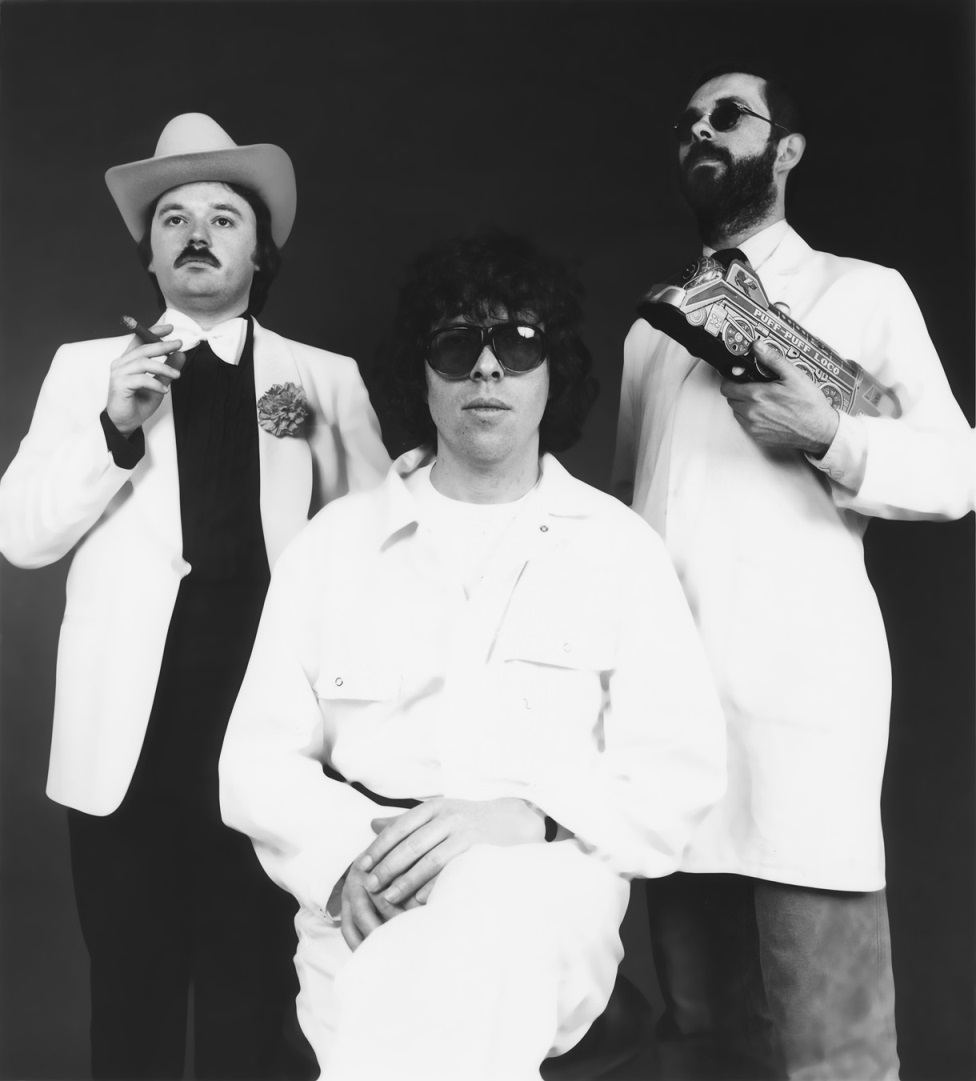
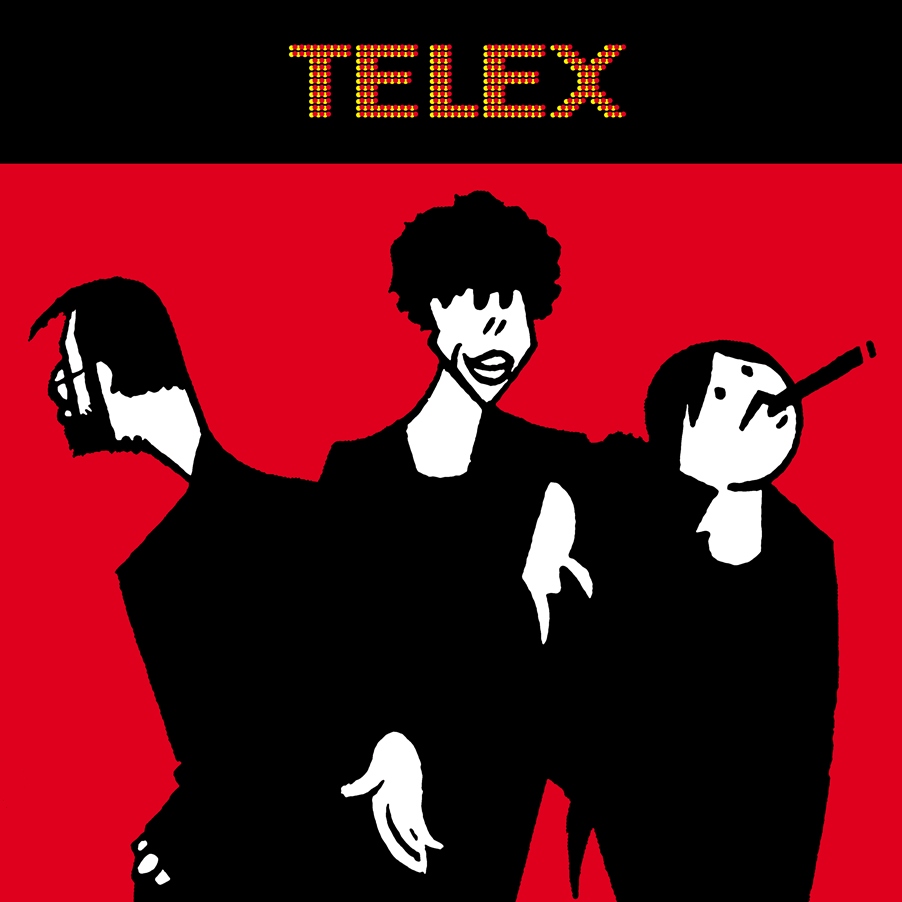

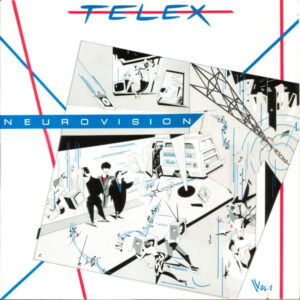
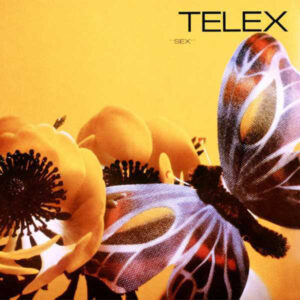
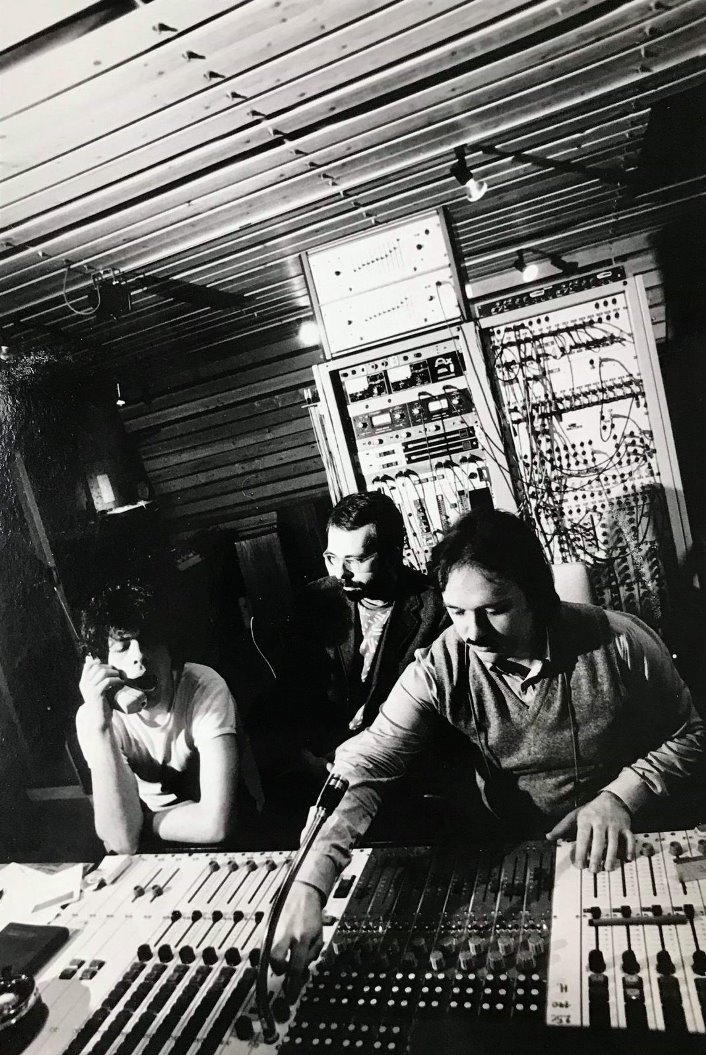
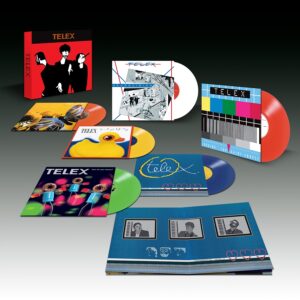
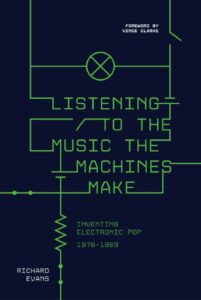
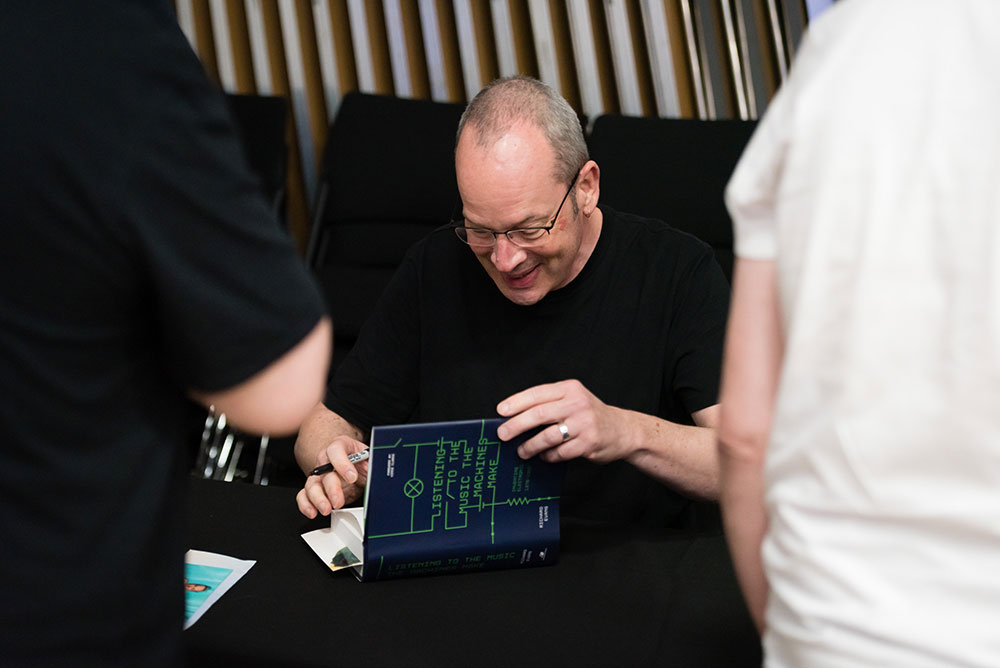
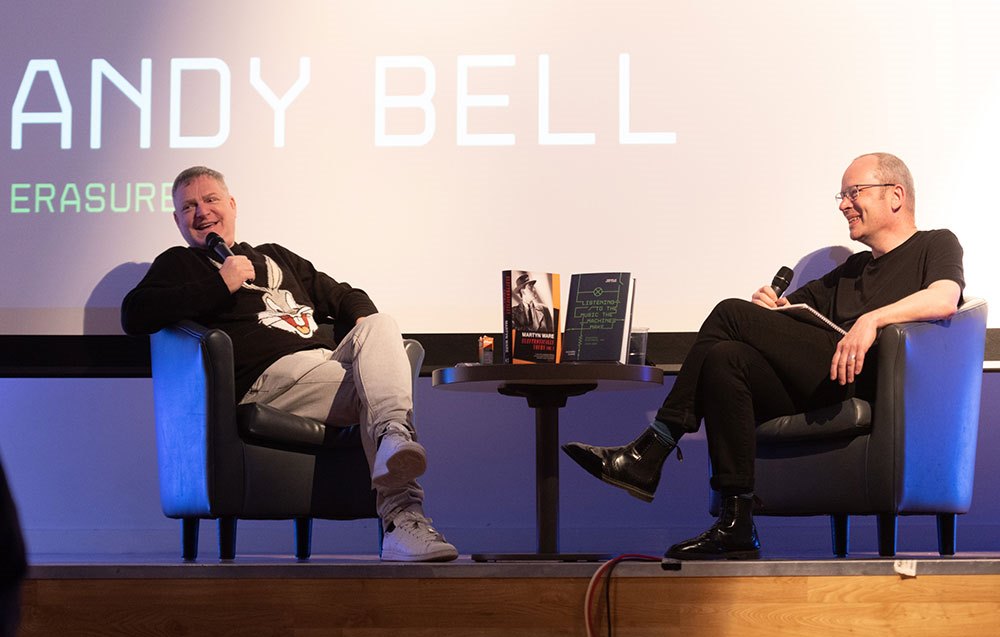
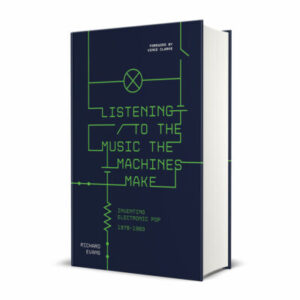
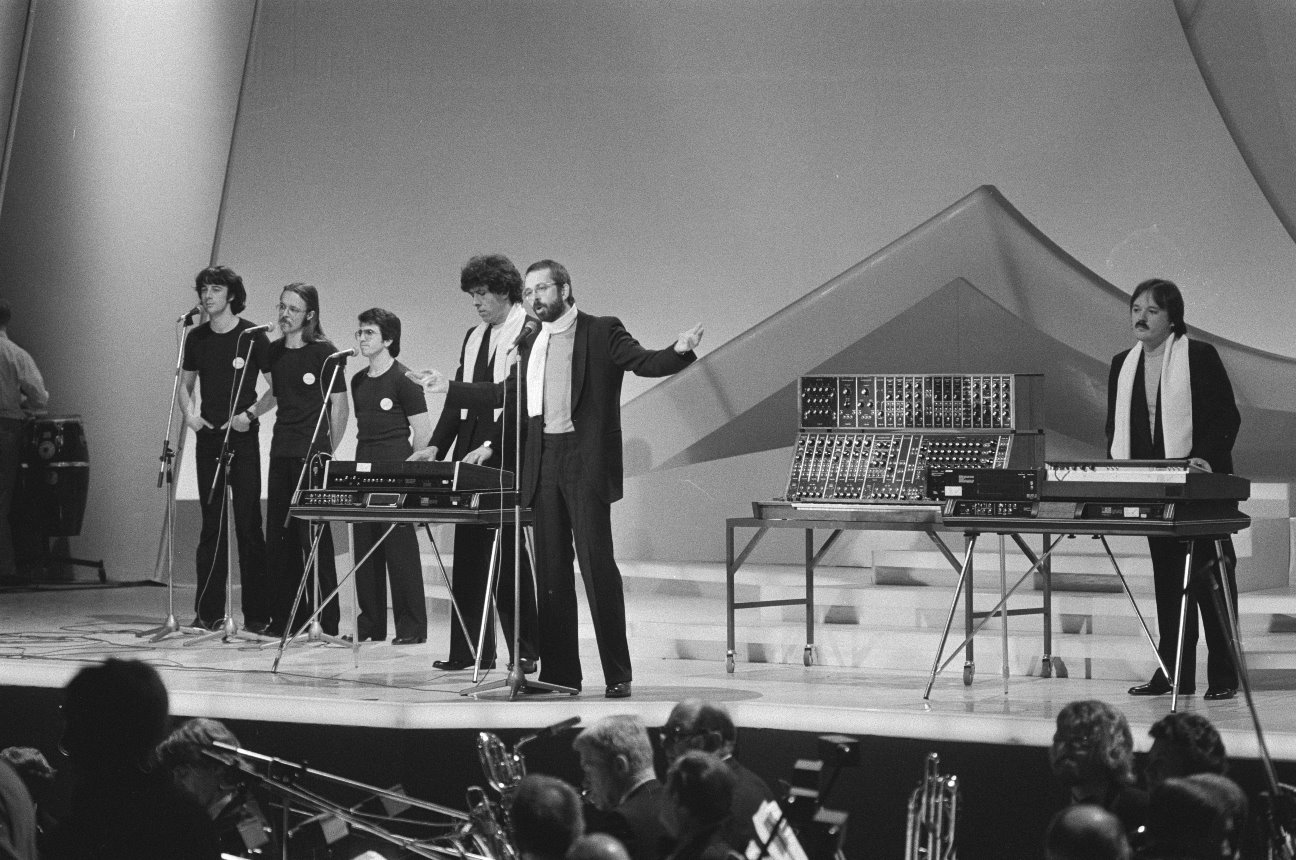
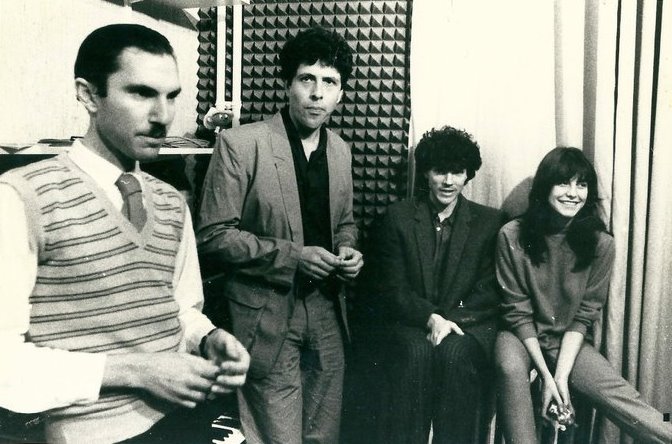
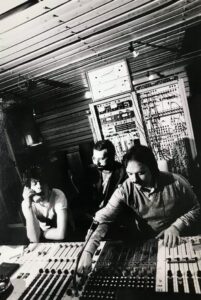
Follow Us!